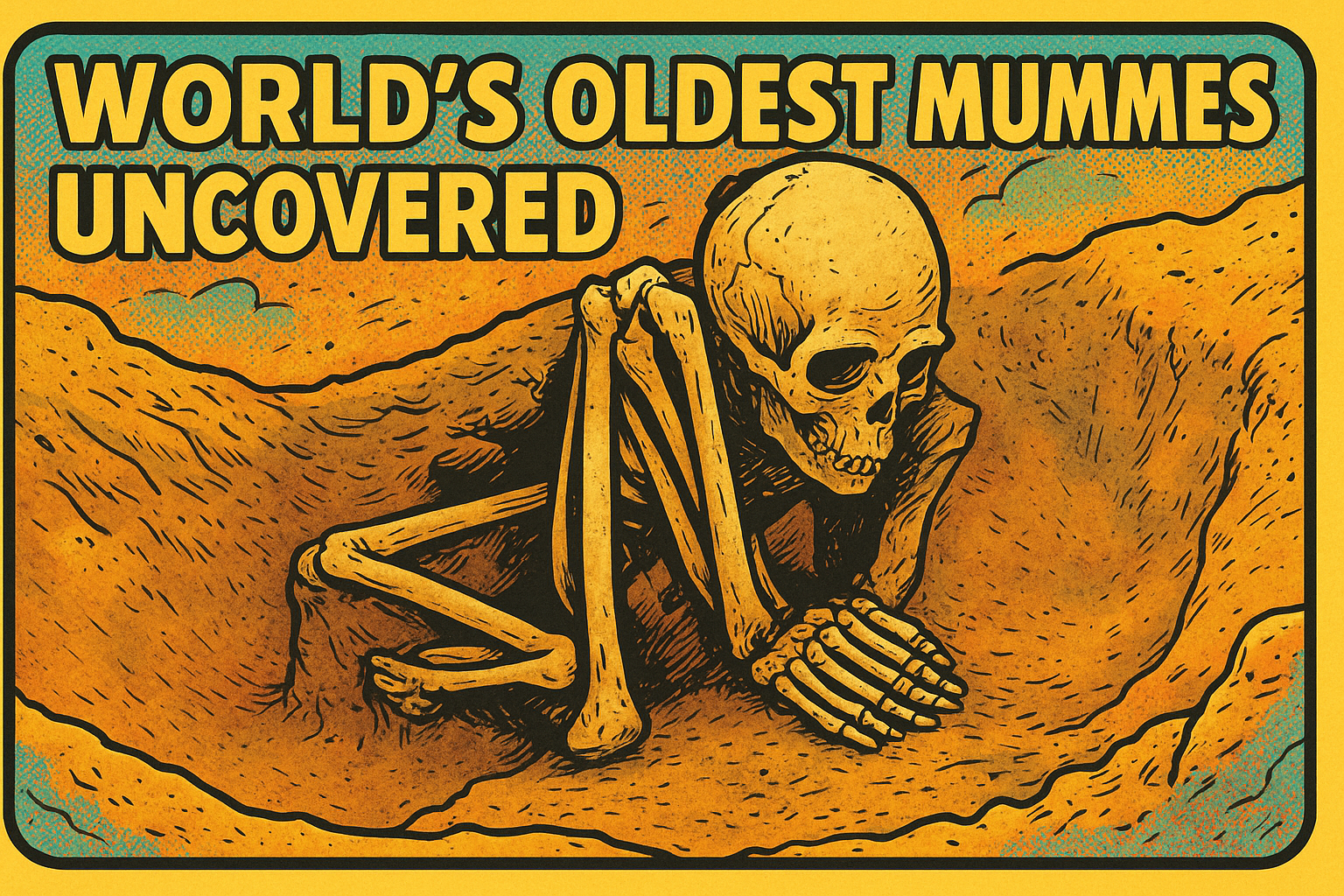World’s Oldest Mummies Discovered in Southern China
Introduction
In a discovery that reshapes our understanding of ancient mortuary practices, scientists have uncovered the world’s oldest mummies in southern China, dating back over 9,000 years. This finding, reported by NBC News and highlighted by Mario Nawfal (@MarioNawfal), predates Egypt’s oldest mummies by nearly double the time. Unlike Egyptian embalming with linen and pyramids, these early hunter-gatherers used an innovative smoke-drying technique, offering unprecedented insight into prehistoric cultural and spiritual practices.
The oldest mummies in the world may hail from southeastern Asia —from 12,000 years ago https://t.co/Q6reWspFgr pic.twitter.com/7tkClCkfnB
— New York Post (@nypost) September 16, 2025
How the Mummies Were Preserved
Unlike the chemical or linen-based methods used in Egypt, these mummies were preserved by fire-smoking in crouched positions, possibly over pit fires. Archaeologists uncovered 54 ancient graves across China, Vietnam, Laos, and surrounding regions, suggesting this was a widespread cultural tradition among ancient communities.
The bodies were deliberately arranged, demonstrating advanced knowledge of preservation that challenges the long-standing belief that Egypt pioneered mummification. This technique, dubbed the “OG slow roast”, highlights the ingenuity of prehistoric societies.
Historical Significance
These mummies date back as far as 14,000 years, long before the first Egyptian pharaohs emerged. The discovery demonstrates:
- Ancient humans across Asia developed complex mortuary techniques independently.
- Fire-smoking was a deliberate preservation method, not accidental.
- Prehistoric societies valued ancestor veneration and ritualistic burials.
Experts are astonished, noting that these findings rewrite the history of human mortuary practices and provide critical insight into early spiritual beliefs.
Images of the Discovery
WORLD’S OLDEST MUMMIES UNCOVERED - AND IT’S NOT IN EGYPT
— Mario Nawfal (@MarioNawfal) September 16, 2025
Scientists have found mummies that are over 9,000 years old in southern China; that's twice as old as Egypt’s oldest wrapped VIPs.
Instead of linen bandages and pyramids, these bodies were smoke-dried in crouched… pic.twitter.com/NfbUvSgHlw
FAQs
Q1: How old are these mummies?
A1: The mummies are over 9,000 years old, with some burial sites dating back 14,000 years.
Q2: Were these mummies found only in China?
A2: No. Similar burial sites were discovered in Vietnam, Laos, and surrounding Southeast Asia.
Q3: How were they preserved?
A3: Through smoke-drying over fire pits, with bodies placed in crouched positions, differing from Egyptian mummification.
Q4: Does this mean Egypt was not the first to mummify?
A4: Yes. Evidence suggests prehistoric Asian societies practiced mummification long before Egypt.
Q5: Why is this discovery important?
A5: It challenges conventional history, revealing advanced prehistoric cultural practices and spiritual rituals.
Conclusion
The discovery of China’s 9,000-year-old mummies represents a monumental shift in our understanding of ancient human societies. These prehistoric hunter-gatherers demonstrated advanced preservation techniques, independent of Egyptian influence. By carefully smoke-drying bodies in crouched positions, they not only preserved their dead but also left behind invaluable clues about early spiritual beliefs, social structures, and cultural sophistication.
From an intellectual perspective, this discovery invites us to reconsider the narrative of ancient civilization, recognizing that ingenuity and ritualistic practices were far more widespread than previously imagined. While Egypt remains iconic for its mummies, the pioneering efforts of prehistoric Asian societies reveal a complex, interconnected tapestry of human innovation stretching back tens of thousands of years.


0 comments